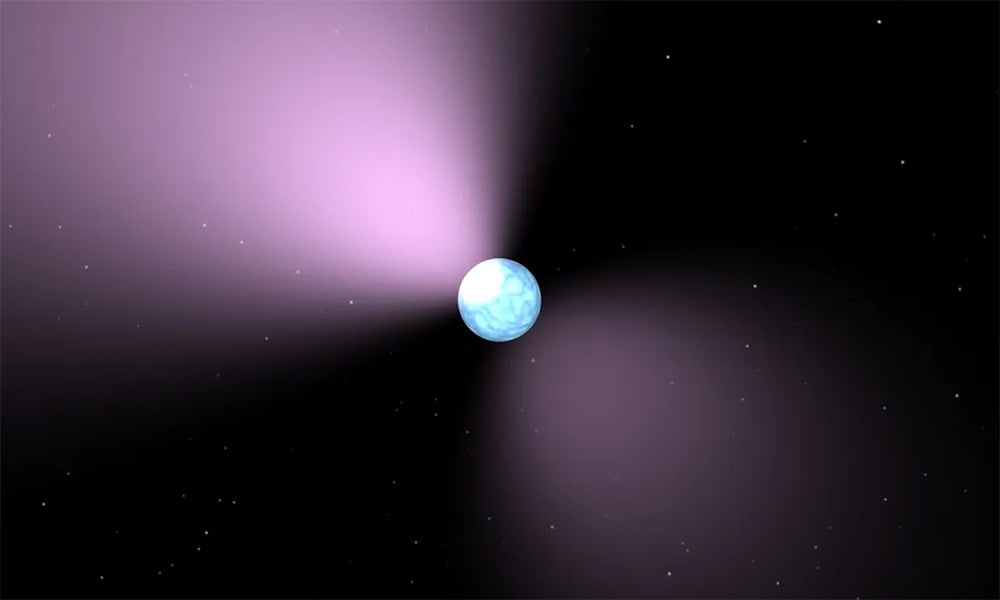The Parker Solar Probe, which reaches speeds of 532,000 km/h, is the fastest man-made object, but is still very slow compared to other celestial bodies in the universe.
Illustration of a pulsar, one of the fastest-spinning objects in the universe. Image: SA/JPL-Caltech
According to current human knowledge, the fastest things in the universe are photons of light, followed by subatomic particles in particle accelerators or high-energy astronomical events. However, they are too small to observe. Instead, the search for the fastest object that is large enough to be seen with the naked eye may be more interesting, IFL Science reported on April 20.
The universe is expanding. This means things are moving away from each other. The more distant an object is, the faster it is receding. So, to humans, the fastest moving object in the universe is also the most distant. But this record is constantly being broken, especially as new instruments like the James Webb Space Telescope come along. Since it began operations last year, James Webb has discovered several new contenders for the title of most distant galaxy, and there will always be more.
However, to any inhabitants (if any) of those galaxies themselves, they are not moving very fast. They would only see some very distant galaxies moving, their own galaxy would appear to be stationary, and nearby galaxies would move very slowly. To simplify, the search for the fastest object large enough to be seen with the naked eye would be limited to those objects moving fastest relative to nearby objects.
The fastest human creation, the Parker Solar Probe, has reached speeds of 532,000 km/h relative to the Sun and is expected to be able to fly 30% faster if all goes well. However, this is still extremely slow compared to the speeds at which some planets orbit their host stars. For example, SWIFT J1756.9-2508b, an object likely to be an exoplanet, orbits its pulsar in less than an hour. This means its average speed is about 766 km per second, or about 0.2% of the speed of light.
Black holes orbiting each other can reach much faster speeds, but scientists usually only detect them from gravitational waves after they merge. One exception is the two black holes in the galaxy PKS 2131-021. Currently, they still take two years to orbit each other, but the process is accelerating.
In linear motion, some stars are ejected from the galaxy by being too close to a supernova or as part of a three-dimensional “gravitational dance.” Of these, the fastest known star moves at nearly 1,000 kilometers per second relative to the galaxy.
However, all the objects that experts have discovered of this type are very far from Earth, meaning that they have only observed very large and bright objects. It is possible that fainter stars, or even planets, are also knocked off their feet and move much faster because they are pushed by the same force while having less mass.
Another notable object is PSR J1748-2446ad, a pulsar rotating 716 times per second located in the globular cluster Terzan 5. This pulsar has an estimated radius of about 16 km. This means its equator is moving at about 70,000 km per second, or an impressive 24% the speed of light.
According to IFL Science/VNE
Source




![[Photo] Prime Minister Pham Minh Chinh chairs the second meeting of the Steering Committee on private economic development.](https://vphoto.vietnam.vn/thumb/1200x675/vietnam/resource/IMAGE/2025/11/01/1762006716873_dsc-9145-jpg.webp)


































































































Comment (0)